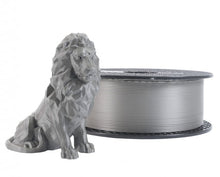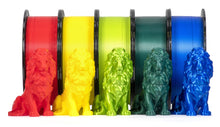Prusament PLA Filament - 1.75mm, 1 kg (Same Day Shipping Within Canada)
PRUSAMENT Filament, 1.75 mm, 1 kg Spool
Toronto's quickest Prusament filament distributor. Ships immediately within Canada.
To waive shipping and pick up your order in Mississauga, select "Pick Up" at checkout.
About PLA
Nozzle: 215 deg C
Heatbed: 50-60 deg C
PLA melts at a relatively low temperature of about 175 degrees Celsius. Unlike so-called thermoset materials, PLA can be heated past its melting point multiple times with very little degradation. It’s a hard material, but that also means it’s somewhat brittle, and once it breaks, it likes to shatter. Only this material is proven for 50 microns layer height.
However, PLA is not a perfect material and, just like every other plastic, has some disadvantages. The low melting temperature also means low-temperature resistance. Parts start to lose mechanical strength at temperatures over 60 °C.
The combination of being low in UV and temperature resistance means that it’s not ideal for outdoor use. Also, PLA is only soluble in chemicals like chloroform or hot benzene. So when connecting multiple pieces, you’re better off using just glue.
Even though PLA is on its own food safe, we do not recommend repeatedly drinking or eating from your 3D prints. Because of the small fractures on the print surface, bacteria can build up in there over time. You can prevent this by applying a food-safe coating. When post-processing PLA, it’s better to use wet sanding. Without water, you'll quickly start heating the plastic by friction, which will cause it to soften and make it hard to keep sanding.
Our online inventory is always up to date - if you can add the item to your cart, it is IN STOCK in Toronto!
- Vendor
- VoxelPrints
- Regular price
- $37.00
- Sale price
- $37.00
- Regular price
-
- Unit price
- /per
Customer Reviews
Adding product to your cart











